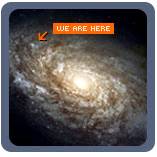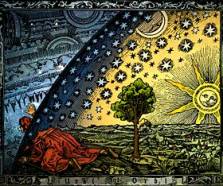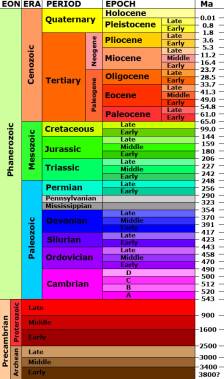|
from The Worldview Literacy Book copyright 2009 back to worldview theme #4 |
| Discussion Recall previous discussion (theme #3)
contrasting person
A, whose worldview and associated behavior are dominated by
"Focused Vision," and person B, who similarly embraces the
diametrically opposite theme #4 "The
Big Picture: Global Vision." Person
A has an egocentric worldview and lives in a mental world where
everything revolves around him or her.
Person B's outlook is not plagued by this illusion of central
position. Accordingly, he
or she is not only better able to empathize with others and imagine
seeing through their eyes, but also is better able to step back and
metaphorically see the world as other eyes see it, have seen it, or will
see it. Yet while Person B
is not handicapped with the "tunnel vision" of Person A, he or
she is not as attuned to lower level details.
Seeing the forest rather than the trees, being more of a lumper
than a splitter, person B tends to be better at synthesizing and
integrating, and more wholistic than
person A. While the mental universe of person A is heavily
dependent on information obtained directly by the ordinary human
senses— sight, hearing, smell, taste, and touch—person B's worldview
includes information derived from technological extensions of the human
senses. These capabilities
for detecting the very small, the very far away, longer or shorter
electromagnetic radiation than the human eye can detect, mere trace
amounts in chemical analyses, etc. reveal an invisible world.
While some have always sought to look beyond (see Figure #4c),
one can argue that the year "Global Vision" really entered the
human drama is 1609. Then
Galileo turned his telescope to the night sky and saw such wonders as
four moons revolving around the planet Jupiter, and the planet Venus
exhibiting lunar-like phases. Rational
interpretation of what he saw confirmed that the Earth should be removed from the special position
it had been given at the center of the universe. Humans are not in a privileged position (called the
Copernican Principle—see Figure #4a).
This was rather humbling. One
can argue humility pervades the process by which science advances. While its conceptual framework steadily evolves, new
observations may necessitate tearing down and rebuilding parts of it.
Unlike the absolutes of religion, science is tentative.
Just as Galileo sought meaning
behind his observations, the global vision of many scientists who
followed him and their search for meaning has built modern science's
conceptual framework. Much
of this has been erected using an inductive process: from many
observations, patterns are found, leading to hypotheses and ultimately,
to broadly applicable theory. Note
this logical reasoning moves from specifics or lower level facts
upward to higher level generalizations in an integrating, synthesizing
fashion. Of course the
opposite deductive process (employed by those skilled at seeing fine
detail and with good analytical skills) has made important contributions
to both |
Discussion—continued scientific understanding and to applying that
understanding in engineering the modern world.
And obviously, unlike our imaginary person A and person B, real
people are capable—to one extent or another—of both induction and
deduction, synthesizing and analyzing, lumping and splitting, holism and
reductionism, egocentrism and empathy, etc.
Transcending specific methods or ways of seeing, unlike those
with narrowly constrained worldviews, those with global vision possess
an intellectual curiosity and a willingness to look that knows no
boundaries. Today, nearly
four centuries after Galileo, there are those who, in either real or
metaphorical terms refuse to look through the telescope: perhaps some
with worldviews leaning heavily on "Religious Fundamentalism"
and "Anthropocentrism" (worldview theme #9A & #25
respectively, ones diametrically opposed to worldview theme #4).
Rather than being afraid of seeing something that will disturb
the comfortable security of the worldview they've grown up with, those
with global vision look eagerly. They
seek to fill gaps in their understanding, make refinements or new
connections, arrive at new syntheses, gain new insight into solving old
problems, and sometimes just to gaze in awe of nature!
To better understand what people with global vision see and
appreciate, consider the question, "What are we made of and where
did it come from?" For
those with intellectual curiosity and vision that sees through space and
time, the answer to this question involves what has been called
"The Great Story." It
is the story of the steps in physical, chemical, and biological
evolution that ultimately made you and me what we are.
This
ultimate "roots" story starts with the Big Bang
fourteen billion years ago, and highlights the birth of our solar system
and Earth four and a half billion years ago.
In the interim, generations of billions of stars were born and
died. Just as human remains
enrich the soil and foster new growth, stellar deaths enrich the
surrounding space. Most
spectacularly, supernova explosions spew the byproducts of the nuclear
reactions which powered these stars—like carbon, oxygen, iron,
etc.—into space. With-out
this enrichment, the interstellar medium would consist of essentially
the 75% hydrogen and 25% helium that it had shortly after the universe
began. Without this cosmic recycling, things that require heavier
elements—Earth-like planets, water, plants, and people (61% oxygen,
23% carbon, etc.)—would not exist!
The story continues over geologic time (Figure #4b). Single celled life on Earth began around
four billion years ago, grew in complexity and moved from water
to land around four hundred million years ago, and finally produced
primitive humans around four million years ago.
Roughly forty years ago this evolving intelligence, after
comprehending the cosmic distance scale, finally realized that the iron
rich hemoglobin in its blood owed its existence to stars that died
billions of years ago! |
|
Figure #4 a)
Locating the Solar System
in the Milky Way Galaxy
c)
The Ancient Quest to Look Beyond
|
b)
The Geologic Time Scale .
Ma
= millions of years ago |


